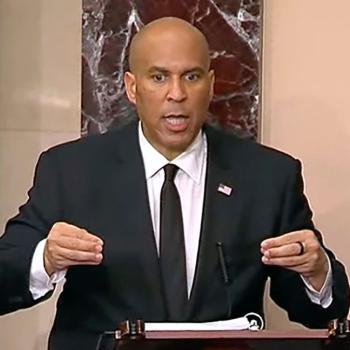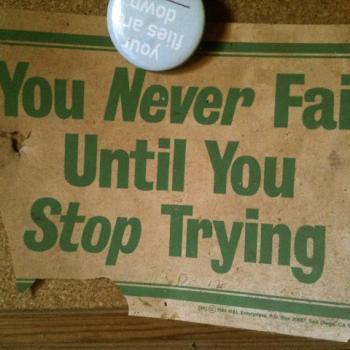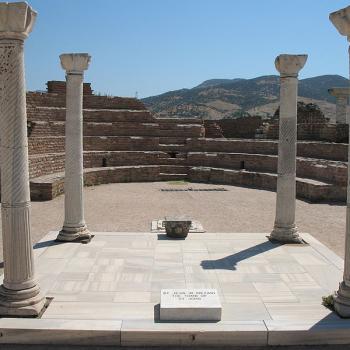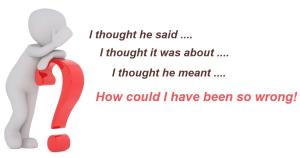Part 1 – the need for change is part of the church
New generations largely regard the church with contempt. This has led many to think that the world is coming to an end. Not so. New generations have the same spiritual needs as people have in the past. They just don’t find those needs met in churches.
This generation won’t be worked with in the same way as older generations. This requires a change on the part of church leaders.
In this series we’ll look at the many issues that new generations have with the church, and see if these can be resolved by more thoroughly examining theology. Much of this is already covered in my book, New Generations Walk with Jesus.

Image by Liz West on Flickr
Church eras change
This may be the end of this era of the church. Religion has eras. We tend to think of the church as having been one monolithic structure all through history. In reality it is a history of change, and with those changes came different beliefs.
Jesus was a reformer who helped people understand what was important in Judaism, and made changes that were essential such as ending sacrifice and the need for priests.
In the first couple of Centuries Christians mostly met in people’s homes. There was no building. The end of the Apostles was a change. The Book of John was the capstone of that era. Then the organized church was another major change, and began to solidify in around 300 CE when Roman Emperor Constantine made it the religion of the State. At the end of that era the Bible became an official canon of books as the Century closed, long after Constantine’s death. The official canon varies by denomination.
Portions of this article used History of Christianity – Wikipedia as a reference.
Religion by force
Once institutionalized and in league with government, Christianity was forced on people, often violently.
Then came the beginning of the split in the 4th Century between the East and West: Roman Catholicism (Catholic Church), and Eastern Orthodox. This split didn’t finalize until the 10th Century.
The Crusades were an attempt to forcibly retake land from other religions and forcibly convert people to Christianity. It was an era of forced belief.
The Inquisition was an attempt to ensure “right belief” among the followers of Christianity. Heretical beliefs were extinguished by eliminating anyone who believed them. As an example, the Cathars in a region in France were killed, men, women, and children. The Inquisition continued for Centuries.
Age of the “less than”
At the end of the religion by force age explorers were going to the Americas and bringing priests with them to convert the indigenous people. The conquerors considered the people “less than,” and took the treasures of the land. To harvest the spoils of the land they took people into slavery.
This action continued through the conquest of North America. The “less than” people were driven out of their homelands. The Inquisition was still going on and was responsible for the Salem Witch Trials.
Black people were also imported from Africa and put into slavery in the many lands and islands that were conquered.
The era of conscience and reformation
The Protestant Reformation, building on the work of John Wycliff by such people as Martin Luther and later John Wesley, was an attempt to bring Christianity back to its founding principles and get rid of the corruption in the church.
The Catholic Church underwent its own reformation. Over time Protestantism fractured into several different denominations.
The Puritans came to the New World (America) to escape suppression of their religious practices and licentiousness.
The Great Awakening
This movement saw the development of evangelical Congregationalist, Presbyterian, Baptist, and new Methodist churches. It featured a more spirited (conviction) preaching, a deep sense of personal guilt, redemption through Christ, and an emphasis on evangelism to get converts.
Restoration
Many felt that the church lost its bearings and tried to get back to the style of church and beliefs that were features of the early days of Christianity. They usually start independent churches that garner family and friends, often driven by a charismatic pastor who builds the congregation for a while.
Era of Change
Religion is locally situated. In reaction to the rapid technological driven population, job, science, and cultural change that started around 1900, more fundamental practices evolved that held onto more literalist interpretations of the Bible. The deeper the world got into this era, the more people have been motivated by these changes and changes in economic conditions to cling to what appears to them to be more solid beliefs.
In search of stability, people sought “approved” more literal translations of the Bible. In the 1930s government, business, and religious leaders met to promote, even from the pulpit, ideas about Capitalism and hard work. (One Nation Under God by Kevin Kruse.)
Commensurate with this search for more concrete beliefs came a new interpretation of beliefs about the return of Christ and the End of the World. People began looking for Jesus to return and create a new world order. End Times Prophecy – False Religion
Current religious thrusts in this era and continuing to today intermingle politics, economics, and religion.
Current era of Conscience and Reformation
Since 1900 Church attendance as a percentage of the population has been in decline at around 1% a year, and accelerated after the year 2000. The reasons vary but I think it’s safe to say that people often don’t feel a need for the church and often feel put off by it. They also look at the way various churches have hurt people and reject them.
The things the newer generations find offensive about churches are Bible thumping, the exclusiveness of beliefs and the focus on certain types of sin. These “sins” are usually sexual, especially sex outside of marriage and certain types of sex within marriage – a reflection of Elizabethan puritanism. Freud, birth control, and the 1960s helped to change puritanism.
But the “sins” and sinners scorned by the church has varied over the last 150 years to include alcohol use, gambling, not attending church every Sunday, working on Sunday, dance, modern music, divorce, LGBTQIA+ – the list is endless. If people didn’t like something, or if it represents change, it is denounced as sinful and the person is rejected or looked down on. The effect is to drive people away. Two churches in Revelations – Ephesus
Christianity of the Future
I don’t have a crystal ball and I’m not a prophet, so I can’t see the future clearly. I don’t make money on religion (wish I did), so I don’t have a profit motive for making statements about the future. But there are trends. Trends do sometimes melt away, but many seem very realistic, powerful, and lasting.
From my book, some trends and likely results:
In researching and writing about the church of the future, I can say these things are likely, based on what Millennials, Gen. Z, and many others are looking for. It will:
- Have vitality, not a sleepy and comforting eulogy
- Emphasize spiritual growth and individuality
- Be local rather than a major denomination
- Be relevant to people’s needs, not something the church decides they need
- Be inclusive and accepting of all others, without judgment
- No doctrines or traditions
- Meet people where they are in their life, not as judges of behavior
- Have a firm set of beliefs, but less specific
- Involve people in a meaningful spiritual connection and experience
- Assist with understanding individual meaning and purpose
- Engage and involve everyone, especially youth
- Use social media
- Have multiple services to young adults and New Adults (age 18-30)
- Engage in activities that help communities
The difficulty with these things is that they generally work more for large city churches than for small churches in rural areas with towns under 100,000, who are declining and can’t muster the support. Some have gotten around this obstacle by becoming more ecumenical, doing joint services, such as the LEP program in the UK.
Churches Together in England. One in Christ Jesus, engaged in God’s mission, empowered by the Spirit. CTE.org https://www.cte.org.uk/Groups/237712/Home/Resources/Local_Ecumenical_Partnerships/What_is_an/What_is_an.aspx
Take Home Points
Religion changes over time. Attempts to lock it down to specific purposes fail. Religion naturally goes through periods of soul searching to determine what is true, and reform. Today is no different.
How to Keep Millennials Engaged in Church – on Patheos
What Is Meant by Truth? – on Patheos
Tabernacle of Hate – False Religion – on Patheos
10 Reforms Christianity Needs to Make Right Now – on Patheos
___________________
Our answer is God. God’s answer is us. Together we make the world better.
– Dorian


















